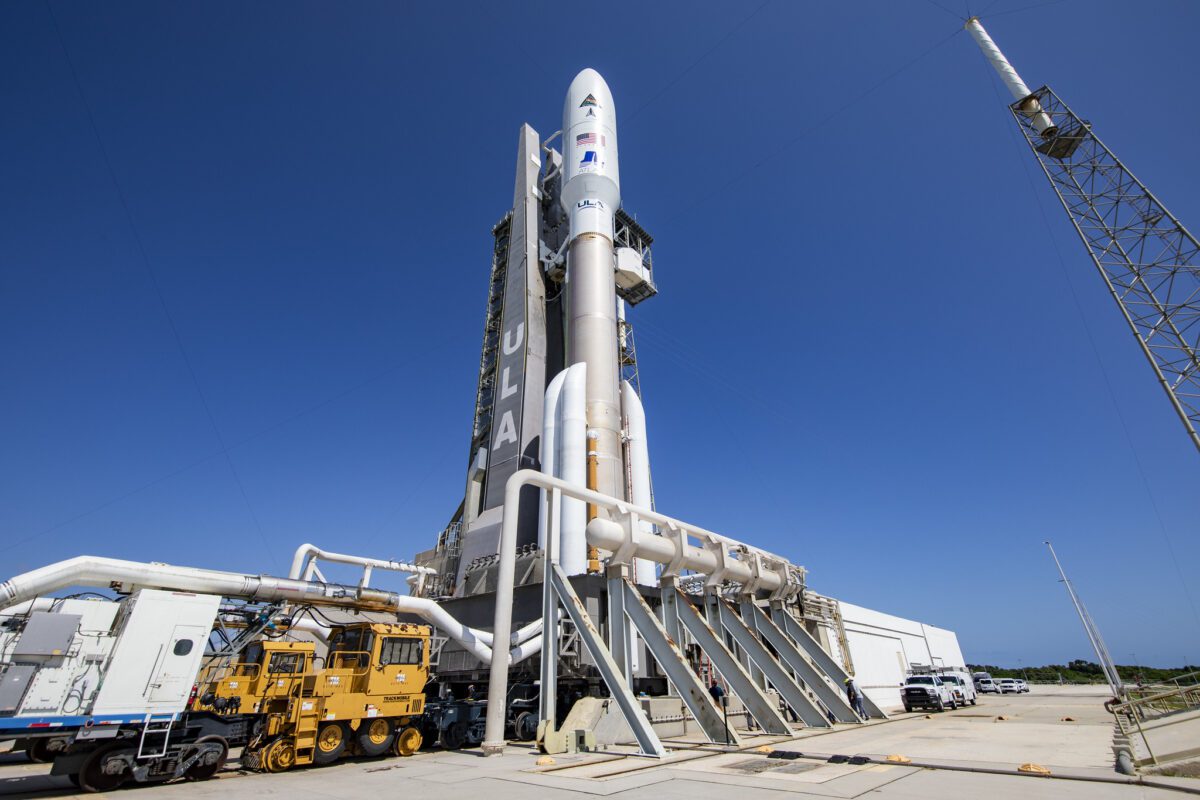The U.S. is countering the rise of so-called inspector satellites from China and Russia with its own space spy, Silent Barker. Silent Barker is designed to keep a watchful eye on these rival inspector satellites, ensuring America’s assets in space remain secure. The artwork for Silent Barker’s launch intriguingly draws inspiration from a 1970s sci-fi novel about space-going werefoxes, symbolizing cunning and espionage.
Originally scheduled for August 29, the launch of Silent Barker was postponed due to Hurricane Idalia’s looming presence over Florida. The Atlas V551 rocket, tasked with carrying Silent Barker, will ascend from Space Launch Complex 41 at Cape Canaveral. This mission, labeled NROL-107, will deploy multiple payloads into a geosynchronous orbit, 22,370 miles above Earth. These payloads will maintain a stationary position relative to a specific point on Earth, ensuring consistent surveillance capabilities.
By 2026, the Silent Barker program aims to achieve full operational capability, with at least two more launches on the horizon. The National Reconnaissance Office (NRO) will oversee the Silent Barker constellation, but the data will be channeled to both Colorado Springs and Vandenberg, California. Silent Barker’s inception dates back to December 2017, serving as an advanced counterpart to the six GSSAP inspection satellites. The program’s budget is nearing $1 billion, with $283 million already allocated to contractors by 2021.
Pentagon officials highlight Silent Barker’s ability to bridge visibility gaps in space, offering “unprecedented coverage” of geosynchronous orbit activities. Ground-based sensors have limitations, especially with changing weather and time of day, making space-based sensors like Silent Barker crucial. The U.S. Space Force believes that this enhanced surveillance will deter potential threats in space by eliminating any plausible deniability. Silent Barker’s existence is being publicized to send a clear message to Russia and China about the U.S.’s enhanced monitoring capabilities. The NRO director emphasized Silent Barker’s advanced tracking abilities, especially for moving objects in geosynchronous orbit. However, specifics about Silent Barker’s operations and the number of satellites remain a classified secret.
The potential for inspector satellites to be weaponized has raised concerns, given their ability to approach and possibly sabotage other satellites. These inspector satellites can perform “involuntary space surgery” using manipulator arms or lasers, posing a discreet threat. Real kinetic space warfare remains a distant threat, but the close approaches of inspector satellites from rival nations have heightened tensions. A Chinese report claimed a close encounter between a Pentagon GSSAP satellite and its Shijian-20 satellite. In 2020, a U.S. general raised concerns about Russian satellites coming within 100 miles of American satellites. The absence of clear space norms has led to uncertainties about how close is too close when it comes to satellite interactions in space. Establishing space rules is feasible, but major space powers remain hesitant, fearing constraints on their own activities.
The Atlas V551 rocket, set to launch Silent Barker, is one of the last of its kind, with the Vulcan Centaur heavy lift rocket slated as its successor. The V551 variant of the Atlas V is a powerhouse, capable of carrying up to 20.5 tons to Low Earth Orbit. On August 25, 2023, the Atlas V 551 rocket was rolled out in preparation for the NROL-107 mission. The Centaur upper stage of the rocket uses liquid hydrogen and liquid oxygen as fuel, producing a thrust of 106 kilo-Newtons. Silent Barker’s launch will mark the 98th Atlas V launch since 2002, with only 18 more launches anticipated.
Similar Post
The ULA, in collaboration with the U.S. Space Force and NRO, is responsible for the Atlas V rocket’s production and mission operations. The NRO describes Silent Barker as a joint venture with the U.S. Space Force to enhance space domain awareness. The ULA has previously launched 17 Atlas V rockets for NRO missions, with the upcoming one being the 18th from Cape Canaveral. The mission’s classified nature means specific details about Silent Barker’s capabilities remain under wraps. The ULA’s statement emphasized the importance of Silent Barker in advancing Space Domain Awareness against potential threats. The NRO and U.S. Space Force have collaborated to address the Department of Defense and intelligence community’s space protection needs. As space becomes an increasingly contested domain, initiatives like Silent Barker underscore the importance of maintaining a vigilant eye above.

















